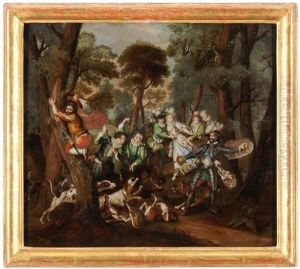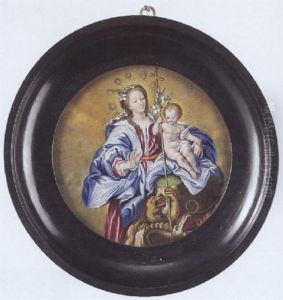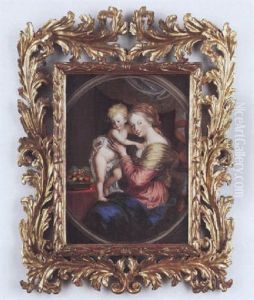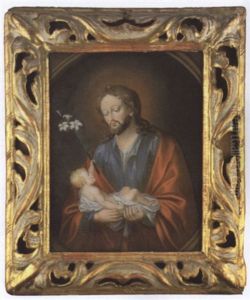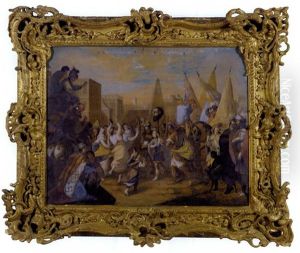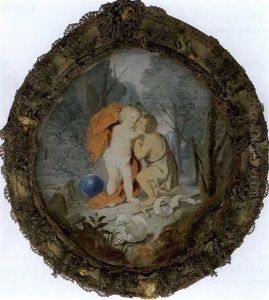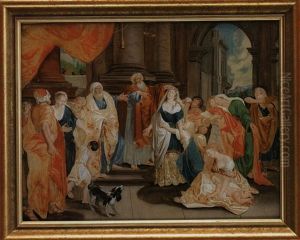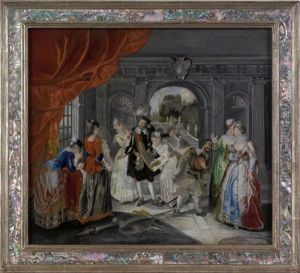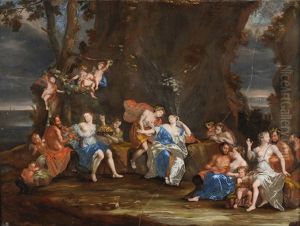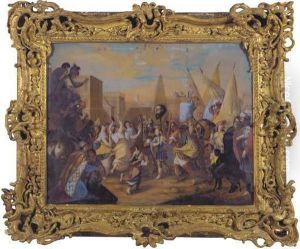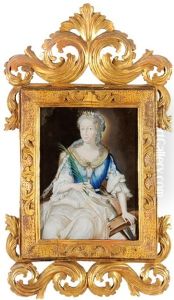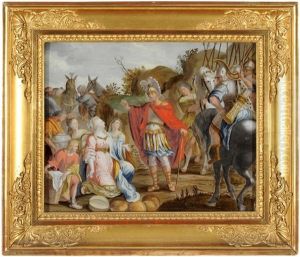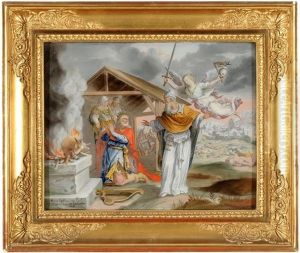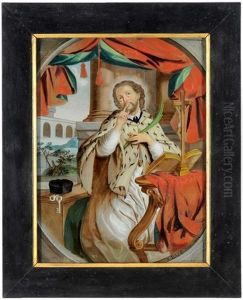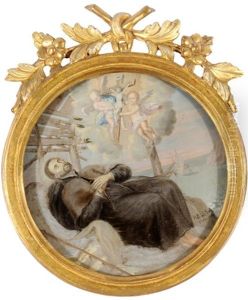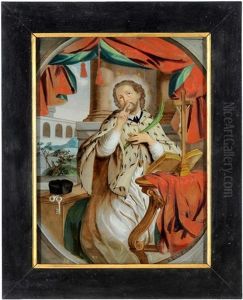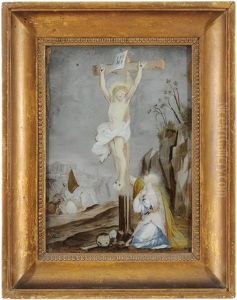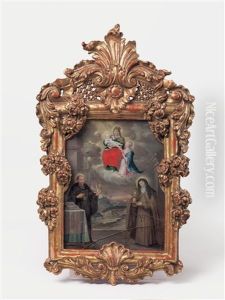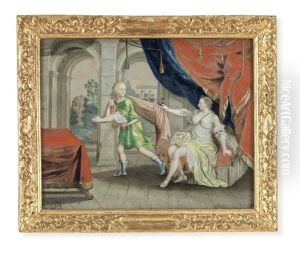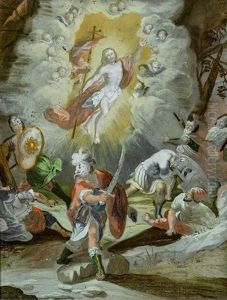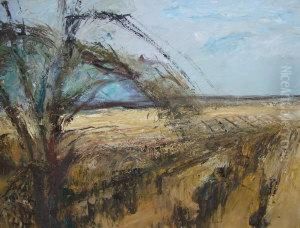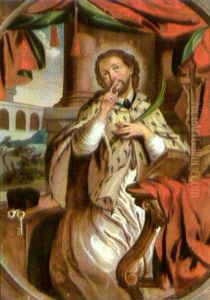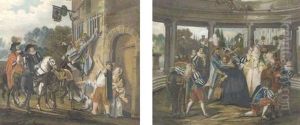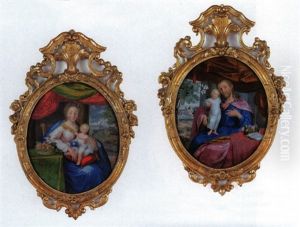Anna Barbara Abesch Paintings
Anna Barbara Abesch was a Swiss reverse glass painter, born in 1688 in Sursee, a municipality in the district of Sursee in the canton of Lucerne. She was part of an artistic family; her father, Caspar Abesch, was also a reverse glass painter, which was an art form popular in Central Europe during the 17th and 18th centuries. This technique involves applying paint to a piece of glass and then viewing the image by turning the glass over, so one looks through the glass at the image. It requires the artist to think in reverse, as the details must be applied first before the background.
Anna Barbara learned the craft from her father and worked in his workshop, which was a common practice for women artists at the time, as they were often excluded from formal training in art academies. She became known for her skill in this medium and her ability to work on a large scale, which was relatively uncommon for female artists of her time. Abesch specialized in religious themes, but she also painted secular subjects such as landscapes and portraits.
Despite the limitations placed on women in the art world during her lifetime, Abesch was able to achieve a certain level of recognition and success. Her works were appreciated for their detail, vibrant colors, and the skill with which she executed the reverse glass painting technique. Some of her works have been preserved and can be found in Swiss museums, serving as a testament to her artistic abilities.
Anna Barbara Abesch's death occurred in 1748. While she may not be as widely known as some of her male counterparts from the same era, her contributions to the art of reverse glass painting have ensured her a place in the history of Swiss art. Her legacy is also reflected in the continued interest in and study of reverse glass painting as a historical art form.
